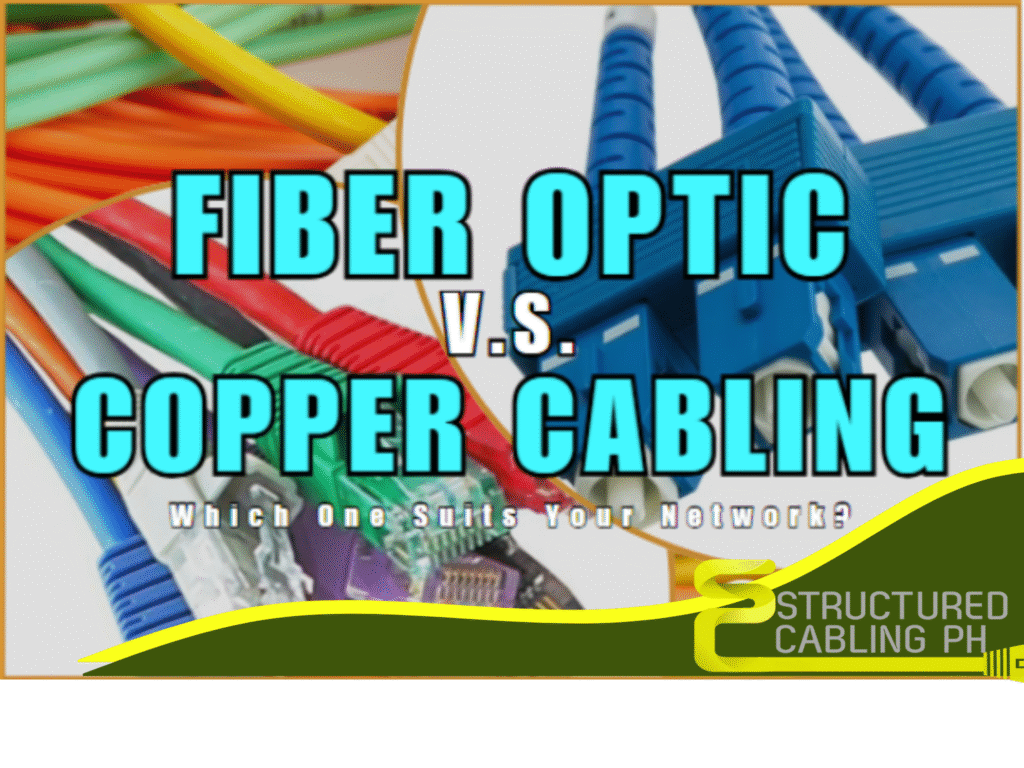When it comes to building a reliable and
high-performance network, choosing the right cabling infrastructure is a crucial decision. The two most common options are
fiber optic and copper cabling, each with its own strengths, limitations, and ideal use cases.
Whether you’re upgrading your office network, planning a
data center, or installing structured cabling for a smart building, understanding the differences between fiber optics and copper can help you make the right call.
Understanding the Basics
Copper Cabling
Copper cables, such as
Cat5e, Cat6, and Cat6a, transmit data through
electrical signals. They’re widely used for LAN setups and are cost-effective for short-distance installations.
Fiber Optic Cabling
Fiber optic cables use
light signals to transmit data through strands of glass or plastic. This allows for
faster speeds,
longer transmission distances, and
immunity to electromagnetic interference (EMI).
Key Factors to Consider
1. Speed and Bandwidth
- Fiber Optics: Offers extremely high speeds, supporting bandwidths well above 10 Gbps, and is ideal for data-heavy applications and future scalability.
- Copper: Typically maxes out around 1–10 Gbps, depending on the cable category and distance.
Winner: Fiber Optics
If your network needs to support cloud computing, video conferencing, or data centers, fiber is the future-proof choice.
2. Distance and Signal Loss
- Fiber Optics: Can transmit signals over kilometers without significant loss, making it perfect for campus networks and long-haul connections.
- Copper: Effective only up to 100 meters per cable segment. Beyond that, signal quality deteriorates without boosters or repeaters.
Winner: Fiber Optics
For larger networks, fiber’s distance capabilities are unbeatable.
3. Interference and Reliability
- Fiber Optics: Immune to EMI and radio frequency interference, which is critical in industrial or high-interference environments.
- Copper: More vulnerable to EMI, which can disrupt data transmission, especially in areas with heavy machinery or electrical systems.
Winner: Fiber Optics
For mission-critical operations, fiber ensures signal integrity.
4. Durability and Installation
- Fiber Optics: More fragile during installation—requires specialized tools and skilled technicians. However, once installed, it’s more resistant to environmental factors.
- Copper: Easier and cheaper to install. It’s physically more robust and can be handled without much technical expertise.
Winner: Copper (Installation), Fiber (Longevity)
Copper is easier to install, but fiber wins in long-term resilience and performance.
5. Cost Considerations
- Fiber Optics: Historically more expensive, but prices have dropped significantly. The initial cost is higher, but it provides long-term value due to lower maintenance and higher capacity.
- Copper: Lower upfront cost and sufficient for small offices or networks with basic needs.
Winner: Depends on Your Budget and Scale
If you need high performance and are planning for the future, fiber is worth the investment. For smaller, cost-sensitive setups, copper can still do the job.
So, Which One Suits Your Network?
Here’s a quick decision guide:
| Need |
Best Option |
| Long-distance connections |
✅ Fiber Optics |
| Budget-friendly small setup |
✅ Copper |
| High-speed and bandwidth |
✅ Fiber Optics |
| Short-term use or rentals |
✅ Copper |
| Industrial or EMI-heavy environments |
✅ Fiber Optics |
| Data center or cloud-based applications |
✅ Fiber Optics |
Final Thoughts
Both copper and fiber optics have their place in modern networking. The best choice depends on
your current infrastructure, performance requirements, environment, and future plans.
While
copper remains a viable option for short-distance and low-budget networks,
fiber optics is the superior solution for scalability, speed, and long-term reliability.
Need help deciding which cabling solution fits your network?
VastResult ‘s experts offer site assessments, structured cabling design, and professional installation for both fiber and copper systems. Contact us today at
(02) 8404 0740 or email us a
t support@vastresult.com for future-proof your network.


